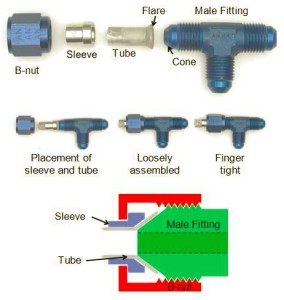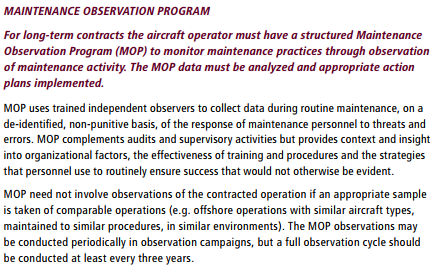USAF RC-135V Rivet Joint Oxygen Fire
A US Air Force (USAF) accident investigation has paradoxically determined that a fire that caused of damage in April 2015 was due to a maintenance error but that no human factors were involved.
The Fire
On 30 April 2015 RC-135V Rivet Joint reconnaissance aircraft 64-14848 of the 343rd Reconnaissance Squadron, 55th Wing had commenced its take off roll at Offutt Air Force Base, Nebraska on a training flight. As the aircraft passed approximately 45 knots, multiple crew in the rear of the aircraft reported seeing a fire above the galley. The take off was aborted and all 27 crew evacuated the aircraft (four suffering minor smoke inhalation).
The Damage
The fire burned a hole through the upper fuselage above the rear galley area, damaging aircraft control and mission systems. The repair cost is estimated to be $62.4mn.
The Maintenance History
Every 4 years, each RC-135 aircraft undergoes Programmed Depot Maintenance (PDM) at contractor L-3 Communications in Greenville, Texas. During PDM, L-3 Communications inspects, cleans and reinstalls the oxygen system in accordance with documents known as Technical Process Specifications (TPS). This was last done on 64-14848 on 21 August 2013. No oxygen system maintenance was conducted in the area of the fire since then. The fittings used in the oxygen system are shown below.
They includes B-nuts, the subject of one of our recent articles. The B-nut and sleeve provide a clamping load to create a seal between the tube and fitting.
The Investigation Conclusions
During investigation it was found that some B-nuts in the oxygen system were finger tight. The USAF report states:
The board president found by preponderance of the evidence that the cause of the mishap was a leak in the high-pressure oxygen system due to poor assembly of the system tubing at depot maintenance. Failure by L3 Communications depot maintenance personnel to tighten a retaining nut connecting a metal oxygen tube to a junction fitting above the galley properly caused an oxygen leak. This leak created a highly flammable oxygen-rich environment that ignited. The resulting fire melted the retaining nut causing the tubing to become detached from the junction fitting, feeding more oxygen to the fire, increasing its size, and causing severe damage to the airframe, galley, and mission equipment onboard the aircraft.
However, very oddly the report also says:
AFI 91-204, Safety Investigations and Reports, 24 September 2008, Attachment 5, contains the Department of Defense Human Factors Analysis and Classification System [HFACS], which lists potential human factors that can play a role in any mishap. Human factors consider how people’s tools, tasks and working environment systematically influence human performance. There is no evidence that human factors contributed to this mishap. [Emphasis Added]
There is a HFACS Maintenance Extension (HFACS-ME), similar to Boeing MEDA, that could have been used to analyse the maintenance circumstances but unfortunately that does not seem to have been applied. The report does erroneously suggests the maintenance personnel did not follow a TPS dated May 2014 – i.e. after the work was actually done(!). The Air Force Times reports that:
Air Combat Command said no decision has been made on whether the company would be liable for the aircraft damage, calling it a “complex subject.” “The purpose of this report is to provide a comprehensive look at all of the factors that led to this accident,” ACC said in a statement. “The report does not suggest or recommend any actions, to include assigning accountability or liability. Discipline and administrative actions, if appropriate, are handled through command channels.” [Emphasis Added]
UPDATE: The full AIB report with the ‘tabs’ is available here (WARNING 150Mb!!). Tab J covers potential ignition sources. The accident has been further covered and illustrated in this press report.
UPDATE 26 June 2018: More than 50 years old already, Offutt’s recon planes are scheduled to keep flying till 2050
UPDATE 19 July 2018: United States Secretary of the Air Force statement on RC-135 Fleet
UPDATE 11 December 2018: Unwinding the Maintainer Mess USAF has “fixed its maintainer shortage this year, closing a gap that had grown to 4,000—6 percent of requirements—as recently as two years ago”.
UPDATE 16 February 2019: Sudden ignition during the replenishment of cockpit oxygen led to the blaze which severely damaged SCAT Boeing 737-300 LY-FLB at Aktau, Kazakstan on 16 June 2015.
The inquiry says the damage to an oxygen hose during the refill and the “instantaneous” combustion of a fine particulate mixture in the compartment, enriched and fed by the oxygen flow, led to the fire.
https://youtu.be/1mEut6b1k9c:
Maintenance Human Factors Resources
Aerossurance is proud to have sponsored a recent Royal Aeronautical Society (RAeS) seminar, Maintenance Human Factors: The Next Generation, at Cranfield University. In his opening address Professor Dave King (a former Chief Inspector of Air Accidents at the UK AAIB) highlighted that as well as thinking about the next generation in the industry we also need to think about a next generation approach to human factors in engineering. Presentations from that seminar are available here.
Aerossurance has previously written about a number of relevant safety, human factors and continuing airworthiness issues:
- Professor James Reason’s 12 Principles of Error Management
- Back to the Future: Error Management
- How To Develop Your Organisation’s Safety Culture
- Fatal $16 Million Maintenance Errors
- Inadvertent Fire Bottle Discharge During Maintenance
- FOD Damages 737 Flying Controls
- Cessna Citation Excel Controls Freeze
- B767 Engine Fire – Ignition from Misrouted / Chaffed Cables
- A319 Double Cowling Loss and Fire – AAIB Report
- Loose B-Nut: Accident During Helicopter Maintenance Check Flight
- United Airways Suffers from ED (Error Dysfunction)
- Airworthiness Matters: Next Generation Maintenance Human Factors
- What a Difference a Hole Makes: E-8C JSTARS $7.35 million Radar Mishap
- USAF Tool Trouble: “Near Catastrophic” $25mn E-8C FOD Fuel Tank Rupture
- UPDATE 13 November 2018: Inadequate Maintenance, An Engine Failure and Mishandling: Crash of a USAF WC-130H
- UPDATE 18 December 2018: USAF Engine Shop in “Disarray” with a “Method of the Madness”: F-16CM Engine Fire
- UPDATE 27 December 2018: Inadequate Maintenance at a USAF Depot Featured in Fatal USMC KC-130T Accident
- UPDATE 9 February 2019: Meeting Your Waterloo: Competence Assessment and Remembering the Lessons of Past Accidents: No one was injured in this low speed derailment in London after signal maintenance errors but investigators expressed concern that the lessons about maintenance errors from the fatal triple collision at Clapham in 1988 may have been forgotten.
- UPDATE 30 March 2019: Contaminated Oxygen on ‘Air Force One’ Poor standards at a Boeing maintenance facility resulted in contamination of two oxygen systems on a USAF Presidential VC-25 (B747).
- UPDATE 24 May 2019: Loose Engine B-Nut Triggers Fatal Forced Landing
- UPDATE 30 October 2019: ‘Crazy’ KC-10 Boom Loss: Informal Maintenance Shift Handovers and Skipped Tasks
Aerossurance worked with the Flight Safety Foundation (FSF) to create a Maintenance Observation Program (MOP) requirement for their contractible BARSOHO offshore helicopter Safety Performance Requirements to help learning about routine maintenance and then to initiate safety improvements:
Aerossurance can provide practice guidance and specialist support to successfully implement a MOP.
Aerossurance also sponsored the 2017 European Society of Air Safety Investigators (ESASI) 8th Regional Seminar in Ljubljana, Slovenia on 19 and 20 April 2017. ESASI is the European chapter of the International Society of Air Safety Investigators (ISASI).
Aerossurance is pleased to be supporting the annual Chartered Institute of Ergonomics & Human Factors’ (CIEHF) Human Factors in Aviation Safety Conference for the third year running. We will be presenting for the second year running too. This year the conference takes place 13 to 14 November 2017 at the Hilton London Gatwick Airport, UK with the theme: How do we improve human performance in today’s aviation business?
Aerossurance is pleased to be both sponsoring and presenting at a Royal Aeronautical Society (RAeS) Human Factors Group: Engineering seminar Maintenance Error: Are we learning? to be held on 9 May 2019 at Cranfield University.





Recent Comments